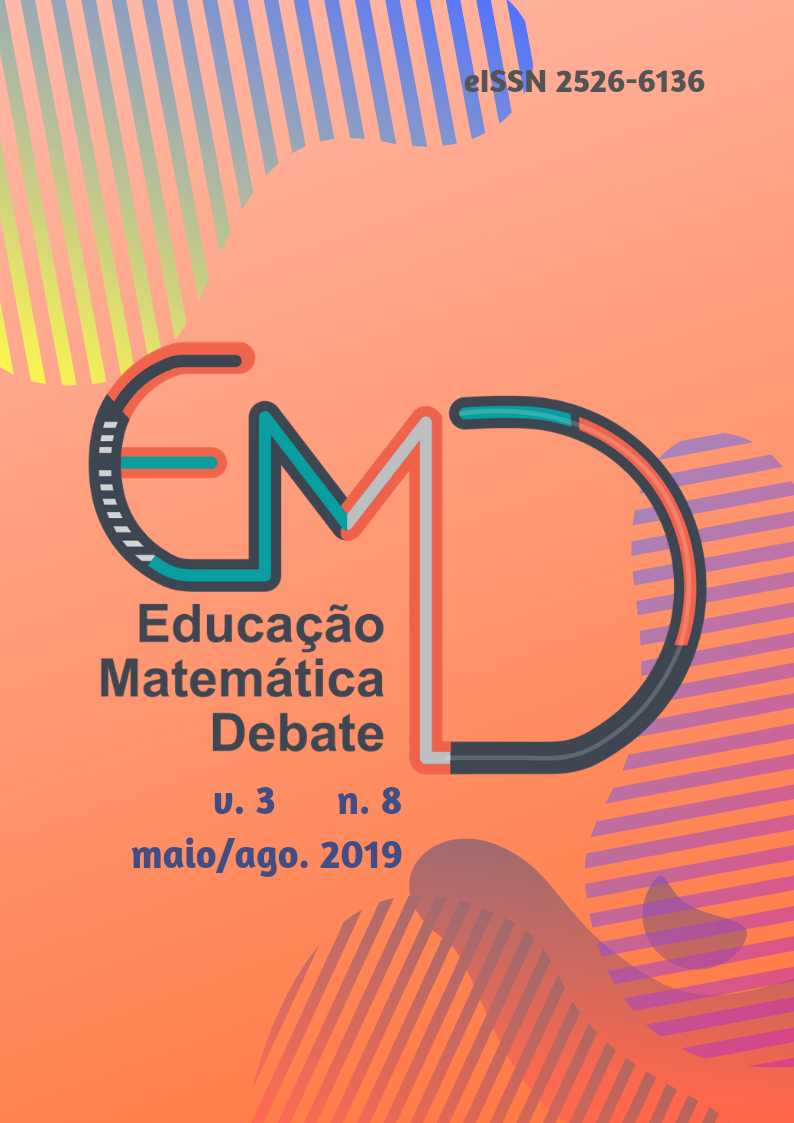Software for the analysis of the development of geometric thinking according to Van Hiele model
DOI:
10.24116/emd.v3n8a03Abstract
The article presents results of a monograph in Mathematics that sought to identify levels of geometric thinking of the students of the Fundamentals of Geometry discipline at the Northwest Fluminense Institute of Higher Education. The studies started from the curricular prescriptions until high school and by applying Van Hiele theory using the GeoRun structured software for the identification of the thought levels. The methodology adopted was the Didactic Engineering, where a preliminary analysis was carried out which traced an initial profile of the sample, the a priori analysis, experimentation, where a teaching session with a dynamic geometry software was held and finally the validation / analysis to after which a comparison of the results obtained and the study validation was performed. It was concluded that the pedagogical intervention enhanced the understanding of the class and there was an evolution in this restudy of the concepts of geometric figures.
Keywords: Van Hiele theory. Didactic Engineering. Computational environment. Geometry.
Downloads
References
ALVES, George de Souza; SAMPAIO, Fábio Ferrentini. O modelo de desenvolvimento do pensamento geométrico de Van Hiele e possíveis contribuições da geometria dinâmica. Revista de Sistemas de Informação da FSMA, Macaé, n. 5, p. 69-79, 2010.
ALVES, George. Um estudo sobre o desenvolvimento da visualização geométrica com o uso do computador. In: SIMPÓSIO BRASILEIRO DE INFORMÁTICA NA EDUCAÇÃO, 2007, XVIII, São Paulo. Anais do XVIII SBIE. São Paulo: Universidade Mackenzie, 2007, p.1-10.
BARROS, Felipe de Carvalho. O jogo computacional YOGEO como ferramenta de análise dos níveis de Van Hiele. 2009. Trabalho de Conclusão de Curso (Licenciatura em Matemática). Universidade Federal Rural do Rio de Janeiro. Rio de Janeiro.
BRASIL. Ministério da Educação. Secretaria de Educação Básica. Base Nacional Comum Curricular (versão preliminar). Brasília: MEC/SEB, 2016.
BRASIL. Ministério da Educação. Secretaria da Educação Média e Tecnológica. PCN+ Ensino Médio – Orientações Educacionais Complementares aos Parâmetros Curriculares Nacionais: Ciências da Natureza, Matemática e suas Tecnologias. Brasília: MEC/SEMT, 2002.
DOLCE, Osvaldo; POMPEO, José Nico. Fundamentos de Matemática Elementar: Geometria Plana. v. 9. São Paulo: Atual, 2013.
KALEFF, Ana Maria; HENRIQUES, Almir de Souza; REI, Duke Monteiro; FIGUEIREDO, Luiz Guilherme. O desenvolvimento do pensamento geométrico: o Modelo de Van Hiele. Bolema, Rio Claro, v. 9, n. 10, p. 1-8, 1994
MACHADO, Silvia Dias Alcântara. Engenharia Didática. In: MACHADO, Silvia Dias Alcântara. (Org.) Educação Matemática: uma (nova) introdução. São Paulo. EDUC, 2016, p. 233-247.
MIRANDA, Guilhermina Lobato. Limites e possibilidades das TIC na educação. Revista de Ciências da Educação, Lisboa, n. 3, p. 41-50, 2007.
MORELATTI, Maria Raquel Miotto; SOUZA, Luís Herique Gazeta de. Aprendizagem de conceitos geométricos pelo futuro professor das séries iniciais do ensino fundamental e as novas tecnologias. Educar em Revista, Curitiba, n. 28, p. 263-275, jul./dez. 2006.
NASSER, Lilian. O desenvolvimento do raciocínio em Geometria. São Paulo: Editora Brasil, 2015.
SILVA, Benedito Antonio. Contrato Didático. In: MACHADO, Silvia Dias Alcântara. (Org.) Educação Matemática: uma (nova) introdução. São Paulo. EDUC, 2016, p. 49-75.
Downloads
Additional Files
Published
How to Cite
Issue
Section
License

This work is licensed under a Creative Commons Attribution-NonCommercial-ShareAlike 4.0 International License.





















